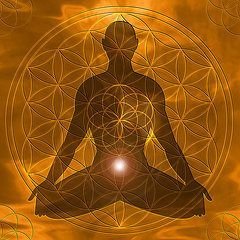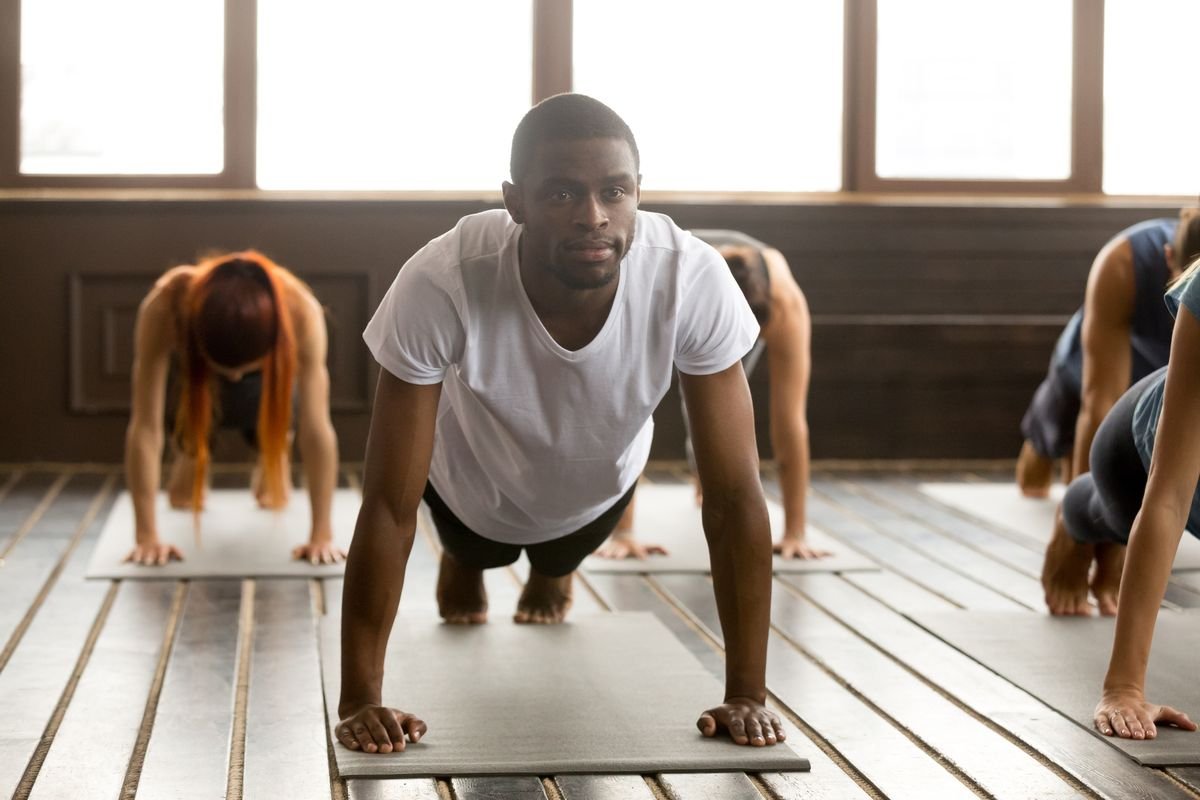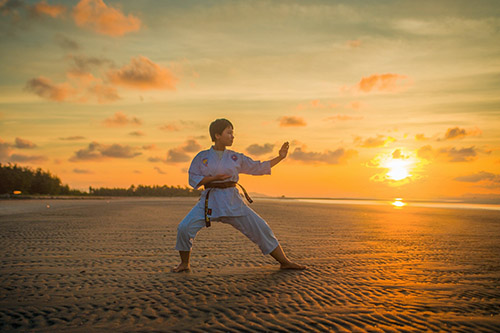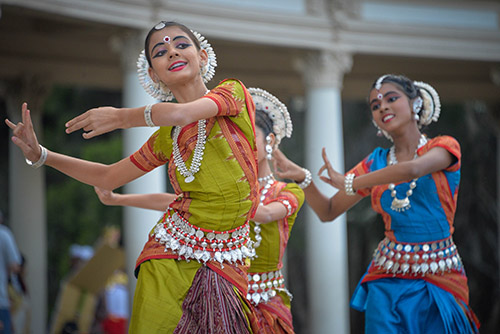– Composed by Duane Steffens, Edited Glenn Nangaku Leisching
In the realm of body practices, there exists a fundamental aspect that serves as the anchor for balance, strength, and movement coordination. This is none other than the “hara,” often referred to as the core or center of gravity. Whether you’re practicing yoga, martial arts, dance, or any physical discipline, understanding the significance of the hara is crucial for unlocking your body’s full potential and achieving optimal performance. In this article, we’ll delve into the intricacies of the hara, exploring its functions and importance across various body practices.

Introduction
The hara, originating from Eastern philosophies, represents the center of gravity located in the lower abdomen, around two inches below the navel. It is more than just a physical point; it’s a reservoir of vital energy, often associated with one’s life force or “ki” in Japanese culture. Across diverse body practices, the hara plays an indispensable role in facilitating optimal performance and overall well-being.
Defining the Hara
The hara is the epicenter of physical balance and rootedness. It serves as a powerhouse of stability and strength, forming the foundation upon which all movements are built. Beyond the physical aspects, the hara is also recognized as an energy center that radiates vitality throughout the body.
The Role of the Hara in Body Practices
Support and Stability
In body practices like yoga, martial arts, and dance, maintaining stability is paramount. The hara, situated at the body’s center of mass, functions as a gravitational anchor. When properly engaged, it fosters a sense of groundedness, allowing practitioners to execute movements with enhanced control and stability.
Energy Center
Viewed as an energy reservoir, the hara is the source of both physical and mental strength. It’s believed that by cultivating awareness and harnessing the energy within the hara, individuals can tap into an abundant source of vitality, promoting endurance and resilience during demanding physical activities.

The Hara within the realm of Chakra concepts
In the realm of chakra philosophy, the location of the hara as the center of one’s being takes on a profound significance. Within the intricate system of chakras, the hara is often associated with the Sacral Chakra, located at the lower abdomen. This chakra is considered the seat of creativity, emotions, and sensuality. It is here that the hara functions as a focal point for the flow of energy, influencing the balance of emotions and creative expression. Just as the hara provides stability and strength in various body practices, its alignment within the chakra system serves as a crucial junction where physical, emotional, and spiritual energies converge. The harmonious activation and awareness of the hara within the chakra philosophy contribute to a holistic sense of well-being and self-discovery.
Cultivating Awareness of the Hara
Breath and Hara Connection
Conscious breathing serves as a bridge between the mind and the hara. Deep, diaphragmatic breaths naturally draw attention to the hara, creating a harmonious connection between breath and movement. This synchronization not only enhances performance but also fosters a tranquil state of mind.
Mind-Body Integration
The hara acts as a unifying point that connects the physical body with the mind. This integration is crucial for achieving fluid movements, as the mind’s focus on the hara enables practitioners to move with intention and precision, whether it’s executing a challenging yoga pose or delivering a powerful martial arts technique.

The Hara in Different Disciplines
Yoga and the Hara
Yoga places great emphasis on the hara as the seat of power and intuition. Engaging the hara during asanas enhances balance, allowing yogis to explore deeper stretches and more advanced postures. Moreover, directing breath and awareness to the hara helps practitioners achieve a state of inner calm and mindfulness.

Martial Arts and Centeredness
Martial artists harness the hara’s energy to achieve centeredness, a state of being balanced and grounded. By initiating movements from the hara, fighters can generate maximum force while maintaining stability. This centered approach not only optimizes combat performance but also instills a sense of discipline and control.

Dance and Fluidity
In the realm of dance, the hara is pivotal for achieving graceful and fluid movements. Dancers who channel their energy through the hara exhibit a natural flow and elegance in their routines. The hara serves as a focal point that enables seamless transitions between steps, enhancing the overall artistic expression.
Exercises to Connect with Your Hara
Rooting Techniques
Rooting exercises involve consciously directing energy into the hara to establish a strong foundation. These techniques are often practiced in stillness, allowing individuals to feel the connection between their hara and the ground. Over time, this practice cultivates a profound sense of stability.
Centering Practices
Centering practices encourage individuals to draw their attention inward, aligning their consciousness with the hara. Meditation and breathwork are commonly used to enhance this connection. With consistent practice, individuals can experience heightened body awareness and an increased sense of vitality.
Conclusion
The hara, often referred to as the core or center of gravity, serves as the linchpin of various body practices. Its multifaceted role in providing stability, energy, and mind-body integration makes it an essential concept to grasp for anyone seeking to excel in physical disciplines. By honing awareness of the hara and incorporating practices that nurture this connection, individuals can unlock their true potential and experience holistic well-being.

Frequently Asked Questions (FAQs)
What is the hara?
The hara is the center of gravity located in the lower abdomen, pivotal for stability and energy in body practices.
How can I locate my hara?
To locate your hara, place your focus two inches below your navel, connecting with the area of your core.
When seated rock your body left to right and front to back finally not leaning left or right or front or back. Feel the location where you are perfectly balanced. This is the hara.
Can the hara influence my emotional state?
Yes, connecting with the hara can promote emotional balance and inner calm through the mind-body connection.
Is the concept of hara culturally specific?
While the term “hara” is rooted in Eastern philosophies, the idea of a center of gravity transcends cultural boundaries.
Can I improve my balance through hara-focused exercises?
Absolutely, hara-focused exercises enhance stability, ultimately improving your overall balance and physical performance.
Free Daily Meditation Sessions
Monday – Friday: 07:00AM – 08:00AM
* Free open meditation space
* Sessions happen live online via Zoom
* Regular supportive space to practice meditation within community
* No training required
* Beginners and advanced meditators welcome
* Basic temple *protocols apply

Zazen | Elemental Meditation Training
*Monthly Online Training
19:00PM – 21:00PM
Tuesdays 7-9pm (SAST)
Zen Meditation (Zazen) is the ultimate sustainability and resiliency practice. To meditate is completely natural. It is through meditation that we begin to train our mind to become less erratic and more focused. During the unfolding stages you will become increasingly flexible, determined, and clear in body and mind. Zazen (similar in nature to Vipassana) is the meditation practice taught by Shakyamuni Buddha. 'Zen' is the Japanese word for meditation. Zen Buddhism focusses on the practice of meditation to alleviate pain and suffering and is the most direct route to enlightenment. Together we learn how to practice zen on the cushion and off the cushion (in every aspect of our daily lives).
Elemental Meditation applies similar Zen Meditation techniques except where you work with the breath in Zazen - in Elemental Meditation you learn how to meditate with one of the 5 Gateway Elements (Fire, Water, Earth, Nature, Stone).
Beginners and advanced practitioners welcome.
Meditation training is by DANA subscription.
Why Join?
I want to deepen my practice through expert guidance
I want to build consistency through daily live meditations
I want to cultivate harmony between mind, body, and spirit
I want to connect with a supportive meditation community
Zazen | Elemental Meditation
R300 per month (Africans)
€45 (R900) per month (Internationals)
Live Monthly Online Meditation Training (2-hour session)
Live Meditation Sessions within community (Monday–Friday | 7-8am SAST)
Private Guidance by Ekan Nangaku (Wednesday mornings)
Compassionate WATER Module
Way of Balance
19 March - 3 May 2026

Learn harmonising techniques - how to sense and relate to others. Access your emotional intelligence. Navigate the complexities of human and non-human relationships. Acquire the skills of meditation; compassion; resonance; resolving dilemma; and shadow work.
